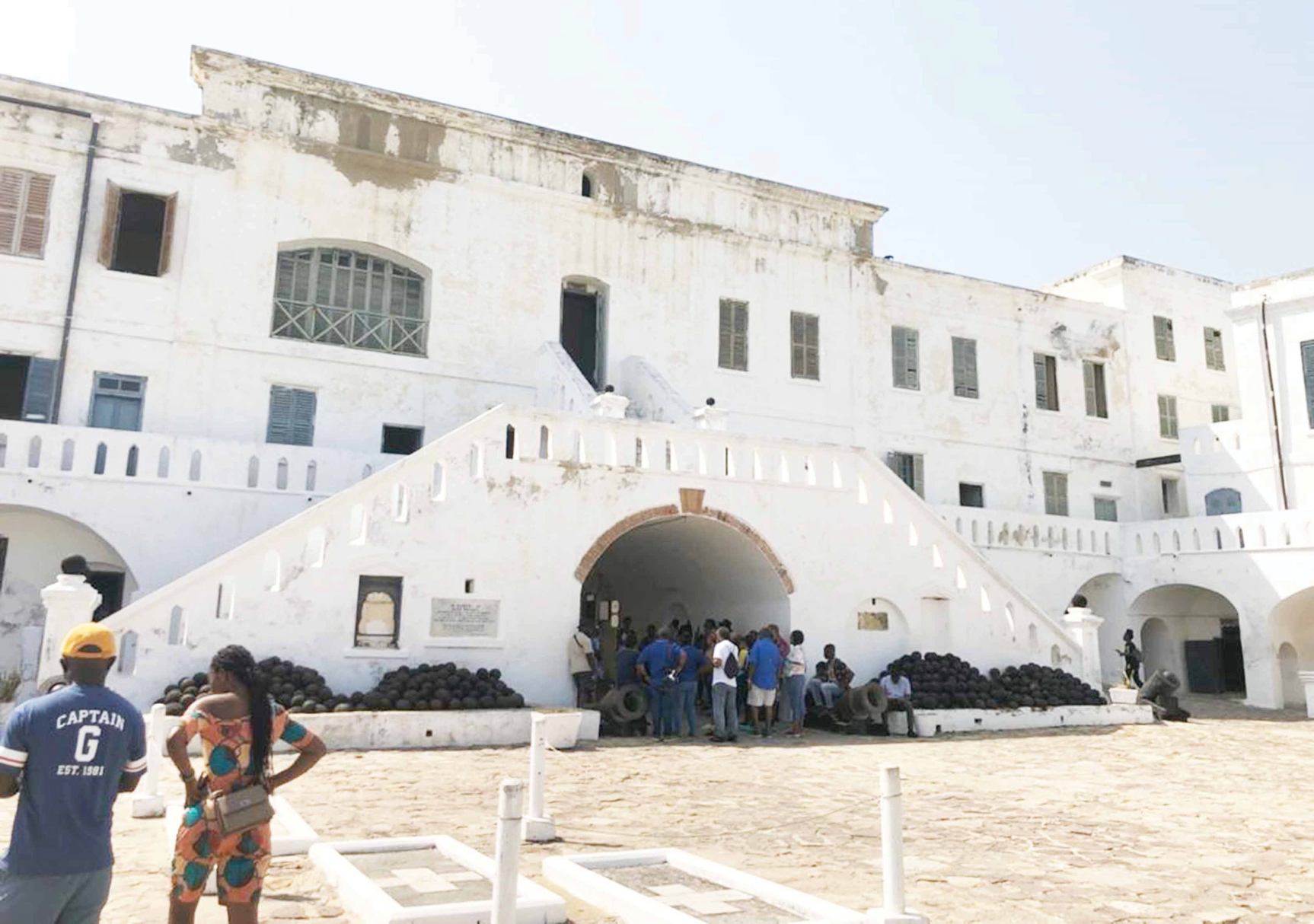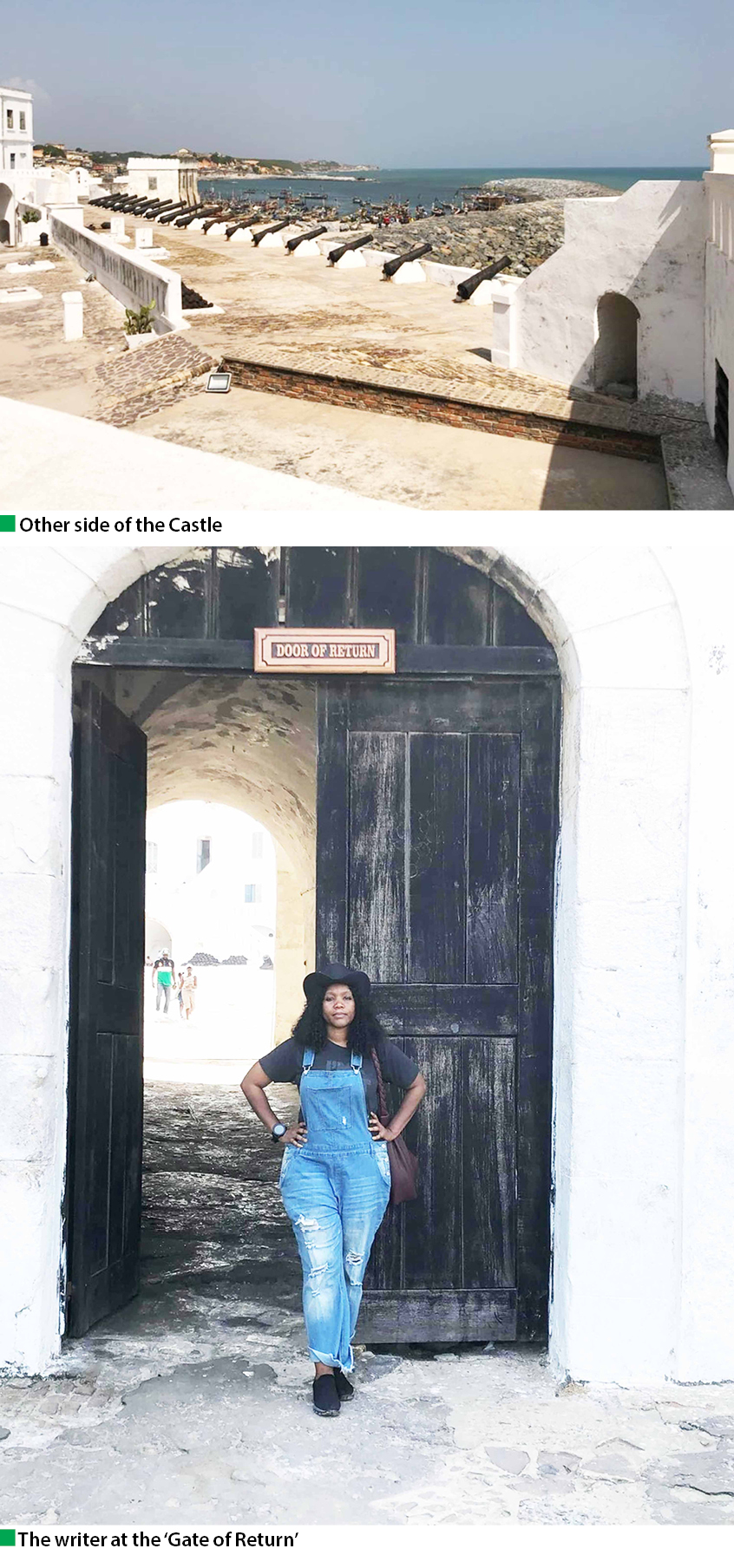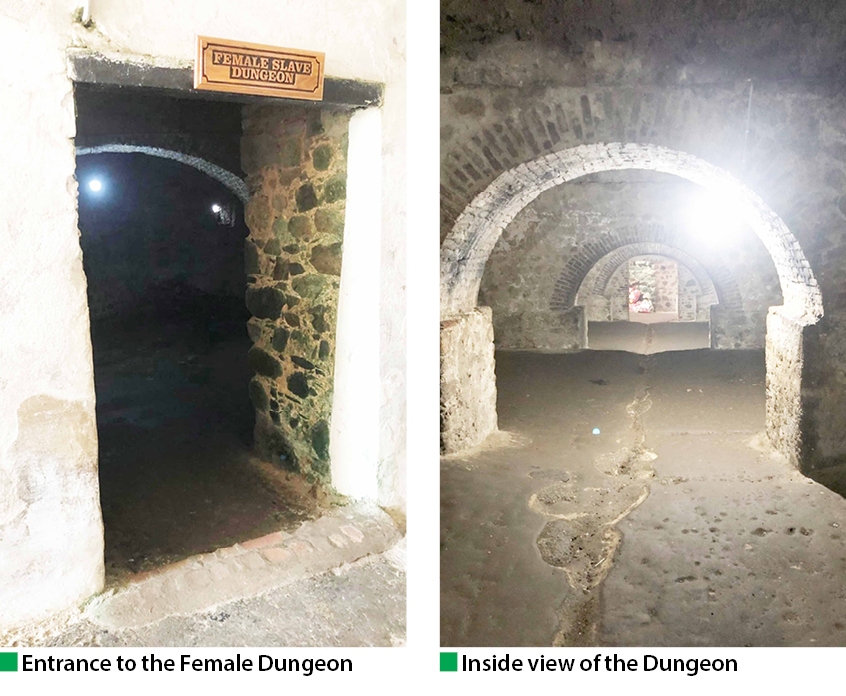Day at Cape Coast Castle: Where Africans were shipped to Europe
When I made the trip to Ghana, I initially did not intend leaving Accra, the capital city. However, the tour guide, Nana Kwadwo Agyemang, suggested that I visit the Cape Coast Castle, as despite the fact that there were many other castles linked to slave trade in the past centuries, it has remained the least […]

Visitors at the Cape Coast Castle
When I made the trip to Ghana, I initially did not intend leaving Accra, the capital city. However, the tour guide, Nana Kwadwo Agyemang, suggested that I visit the Cape Coast Castle, as despite the fact that there were many other castles linked to slave trade in the past centuries, it has remained the least untouched by reconstructions or decay over time.
I was glad I did. Cape Coast was originally the colonial capital of Gold Coast, present-day Ghana.
When the country gained independence from the British colonialists, the name was changed from Gold Coast to Ghana. The capital was also changed from Cape Coast to Accra.
Cape Coast is about three hours of road trip from Accra. We took a car hire for the journey to the Cape Coast Castle, infamous for slavery of our ancestors.
Why my artworks focus on women – Jekein Lato-Unah
Inside MMA2 Art Experience Centre
The Swedish Africa Company in 1653, constructed a wooden fortress for trade of timber on the site of a Portuguese trading lodge.
It was later reconstructed in stone by the Danes when they seized power from the Swedish. It still passed through the Dutch, and even a local Chief Petu.
The British conquered it in 1664.
By the 18th century, the British did not only use the place as its headquarters of colonial rule, but also to house slaves temporarily in its dungeons before being shipped via the Atlantic Ocean to North America.
The male dungeons
There are five male underground dungeons. Each of the dungeons houses 200 men. There was no light, but a small window. Also, there is no provision for toilet. Slaves captured were kept there for months before being shipped to Europe.
They urinated, defecated, vomited on the same floors, in the same rooms they stayed.
The floors are made of untouched caked up remains of vomit, feces, urine and blood. They are caked up because the original dungeon floors were made of bricks.
We stood on the caked up remains of the waste matter now forming a floor.
The female dungeons
The British slave masters had more male slaves so they could work on their cotton plantations in Europe. However, they needed the female slaves to procreate with the male slaves.
Children of slaves became slaves as well. The females had two dungeons and each dungeon had 150 female slaves.
They also vomited, urinated and defecated on same floor as they slept, since they could not exit.
It was worse for the females because when they menstruated, they also just flowed on the floor until it was over. Sanitation was a luxury for the free.
One of the troubling things the female slaves faced was the fact that the slave masters would from time to time come to the female dungeon, pick the attractive ones, got them to clean themselves, fed them and slept with them.
If they got pregnant, they took them to hospitals, got them to give birth, collected the children and returned them to the dungeons.
The children, since they had white blood, were put in schools, sometimes sent to England to get trained.
Any female who refused the advances of the slave masters were locked up in smaller dungeons under more inhumane conditions.
The cell
The door to this cell has remained untouched for close to 400 years. It leads to a cell. Some of the captives attempted escaping from the dungeons, and when they were caught, they were kept in this cell.
The conditions under which captives were kept in this cell were even deadlier compared to being in the dungeons. There are three doors to ensure that offenders did not try escaping.
There was no air nor food and light allowed in there. Offending captives were chained in there. They were allowed to die and the doors were opened after three days to check.
If anyone was still left alive, the doors would be locked again without removing the corpses of those who died first. So, it meant that someone would be tied to the corpse of one who died earlier.
When they were all dead, the corpses would be brought out to show the other captives in the dungeons. That was to serve as deterrent to those who planned to ever escape.
There are several cannons surrounding the castle. They served as protection to the slave masters.

Courtyard and grave sites
In the courtyard will be found the gravesites of Philip Quaque, a Ghanaian who was the minister of the church in the castle, which was ironically directly above the dungeons.
Every Sunday, Quaque would preach, “Love your neighbour as yourself,” while black brothers were living in inhumane conditions beneath the church.
In fact, as he entered the church every Sunday, the stench coming from the dungeons hit him, as one of the dungeons’ only windows were just outside the church door.
Not just that, the ships that were used to transport slaves through the Atlantic Ocean were labelled “Jesus,” “God is Good” and all other similar tags.
The other gravesites belong to Maclean and other slave masters who died of malaria.
Most slave masters could not bring their families to Africa because of tropical diseases.
Malaria, trypanosomiasis
A tale was told of a European lady who came to visit her husband, a slave master, and died in less than a month of arrival in Cape Coast.
Rumours had it that the husband had taken an Accra woman as a lover, and when the white woman found out, she could not take it; and so, ended her life.
Other rumours had it that the husband and the Accra woman conspired to kill the European wife.
Yet, other rumours believed she died of malaria. No one knows the truth. She is lying in one of the three graves in the courtyard of the castle.
The governor’s quarters
One would not understand the height of wickedness our ancestors were subjected to without putting certain things into consideration. Those slave masters actually lived lavish lives at the time.
Imagine the castle beneath which the dungeons were located was the colonial capital. The governor ruled and lived from there.
The governor’s sleeping quarters were lavishly designed with the aesthetics of those times.
The governor’s office was well spaced, with five windows facing the sea. The air coming in from the sea was refreshing.
I stood by this window, taking in the air, and it was one of the best experiences of nature I have ever had. That was an office for one person. Compare that to the fact that just beneath, the dungeons had 200 men each, with one tiny window, no sanitation. There lay the cruelty of man.

Palaver Hall
This is part of the castle where slaves were being auctioned and sold to the highest bidder.
Door of No Return
Once captives were kept in dungeons, they remained there for months before being shipped across the Atlantic. Millions of them died, according to history, even before getting to Europe.
They were not allowed to come out into the courtyard, such that when some of them came out to the sun, its rays caused them to become blind as they had stayed months without being exposed to light.
Tunnels were dug from the dungeons to this door. Once they got to the door, they entered ships going to North America. No one who ever passed through this door came back; hence “Door of No Return.” I had goose bumps standing in front of it.
Door of Return
In later years, descendants of those who were shipped out as slaves decided to make a return journey.
The return was made back to the castle through the outer part of “Door of No Return.” This was to break the jinx of slavery; hence “Door of Return.”
